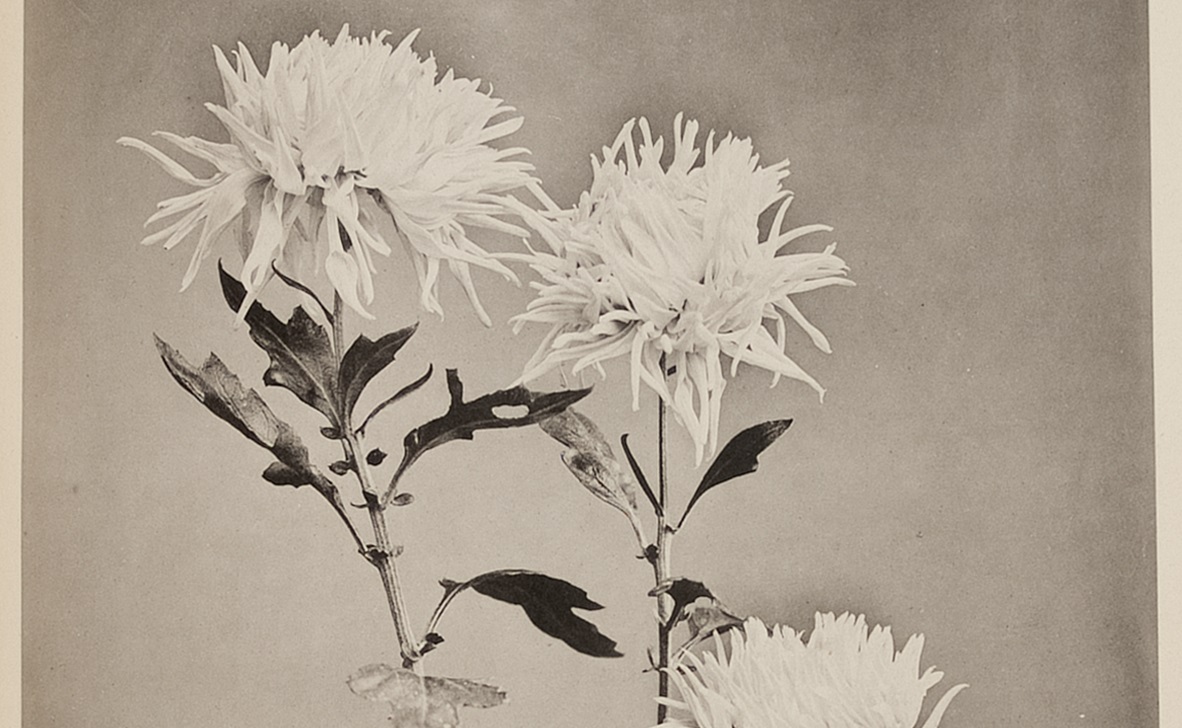
Who was Ogawa and why are these albums important?
Ogawa Kazumasa is well known in Japan as a photographer of scenic beauty spots and cultural heritage.
MoDA holds three albums by Ogawa: Lilies of Japan (1893), Chrysanthemums of Japan, (1893), and Some Japanese Flowers (1894). They are remarkable for the beauty of the images and for their close observation of nature. We have digitized the first two of these three:
Lilies of Japan
Chrysanthemums of Japan
The three volumes of flower images held at MoDA are very rare, and not well known in Japan itself. It seems likely that Ogawa produced relatively small numbers of these albums at any one time. Albums of Japanese scenery and customs were probably more popular than those featuring flowers. It is possible that only a handful of the flower albums were ever produced, specifically for the Western market, rather than for sale in Japan.
The three Ogawa albums held at the Museum of Domestic Design and Architecture (MoDA) are part of the Silver Studio Collection. They were acquired as design reference and were used as inspiration for wallpapers and textiles.
These albums represent an important, yet currently under-researched area of MoDA’s Silver Studio Collection. But it is clear that they had an important visual influence on the designers who worked for the Silver Studio (Giralt, 2015; Hendon, 2012).
The collotype process was a form of early photography in which the image is printed using inks rather than as the result of exposure of chemicals to light. Indeed this ability to print collotypes by the hundreds or even thousands was why Ogawa favoured the technique, since he wanted to print high quality images at high volume.
However, for this reason, Ogawa’s collotypes have long occupied an ambiguous position in the minds of curators of photographic collections. Many have regarded albums such as the three held at MoDA as ‘copies’ or mechanical prints, rather than ‘original’ examples of photographic art. For similar reasons, collotype collections have often been stored in library collections rather than as ‘museum objects’, making it difficult to locate and research them.